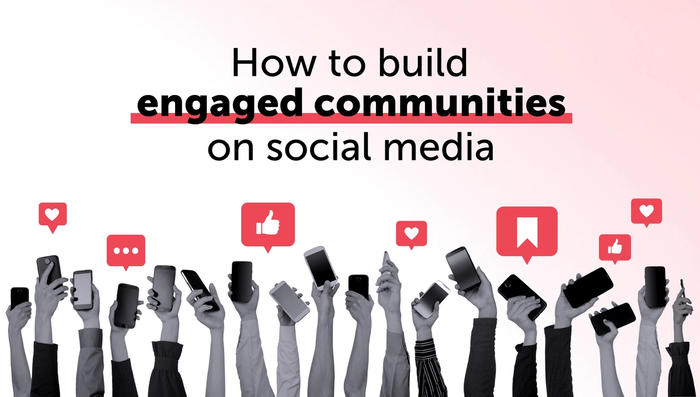Social Media
How to find your target audience on social media
Over half of the world’s population use social media. That’s an audience of billions, but of course, only a tiny fraction will be relevant to you and your business. Knowing who they are and where they are is vitally important to your social media activity. Without that understanding, your whole strategy is uninformed, untargeted, and undirected.
So, how do you find the relatively tiny, yet vitally important fraction who are relevant to you?
Locating your target audience
As a starting point, the chances that your B2B targets are on LinkedIn are very high. It’s the professional social media platform, and the company reports having 810 million members, so it feels like a given that a profession has a profile there. That said, having a profile and being an active user is not the same thing.
If you want to know where your audience truly spends their time online, the best place to start is with your proposition. That’s something you know with certainty. You know the pain, problems, or frustrations that you solve, so you can answer the question, ‘Who feels that pain?’.
- What are their titles?
- What are their industries?
- Where are they based?
With that information, locating them can be quite easy. Work your way through the various sites, using the search function to specify industries and job titles. It’s a simple method, and it’s effective because professional social media accounts will almost certainly have a job title and company in the bio, so they’ll appear when you search the relevant terms.
If you know what platforms prospects use, the next step is to see what they use those platforms for. That includes who they follow, what they interact with, the questions they ask, and what emotions they express.
That’s powerful insight, and it's gold dust for sales and marketing teams. Straight from the prospects’ keyboards, you have their problems, their worries, their frustrations, and how they talk about those things. It’s as if they’re saying, ‘Here’s how you can win my attention.’
Customer Personas
Searching social media and trawling relevant accounts is a time-consuming exercise, and it might not be viable for you. There are alternatives, and they’re effective too.
Your existing customers give you a very good idea of where you can find future customers. After all, someone who buys from you fits your customer profile by definition. Look at where your customers spend their time online, and what they do there. See if you notice any themes or patterns. Your future customers might well behave similarly.
You can complement that data with buyer personas.
Personas are representations of your buyers. They’re archetypes of your ideal customers, based on research and data. By targeting those personas, you’re tailoring your message and your medium to the real buyers who they represent.
Where to start
Some of the questions you might ask include:
- What kind of company do they work for?
- What’s their job title?
- Who do they report to?
- What are their objectives?
- What are their challenges?
- How is their performance measured?
- What does their typical day look like?
- How do they learn, research, or gain information?
You can start to answer those questions through intuition, but you’ll get a really thorough understanding through research. Typically, that involves interviewing or polling your customers and prospects, either yourself or through a third party.
By asking specific questions to a large enough sample, you get a reliable and thorough picture of your buyers, their priorities, and their behaviour. From that, you can build your personas, and target them accordingly.
Customer Journeys
When you have your customer personas, you can start to map their journeys. A customer journey map is a representation of a customer’s experience with a brand. It consists of the buying process, user actions, emotions, pain points and solutions.
Again, having that map is something that benefits your whole marketing spread. When it comes to social media specifically, you need to know where your targets research or interact with the brands they might buy from, and at what stage of the buying journey they do it.
Touchpoints are crucial for mapping customer journeys. Those are any sort of interaction with your brand, and they’re moments when a potential buyer can form an opinion of your company. That could be seeing some content, finding your name in research, interacting with one of your team, or reading your social media posts.
Mapping your customer journey starts with your buyer personas. Take their actions, their motivations and emotions, and their pain points. Then, look at the stages of buying process. Map those against the most likely or common touchpoints, and you’ll see what messaging would be most effective.
If you think your prospects look at LinkedIn at the awareness stage, when they realise they have a problem, then write, share, and comment on LinkedIn articles about that problem.
If you think your buyers are likely to turn to Twitter at the research stage, then tweet useful product and company information.
Takeaways
If you don’t have a strategic and research-driven approach to social media, you’re in real danger of wasting time and money when you use it for marketing. If you’re not bringing the right message to the right people, at the right place, at the right time, you might as well not be sharing any messages at all.
Finding it hard to generate leads through social media? Every day, we help B2B brands grow their reach, build engaged communities and reach prospects online. Give us a call on 020 3941 0305 or get in touch today at hello@nutcrackeragency.com.
Share this:



